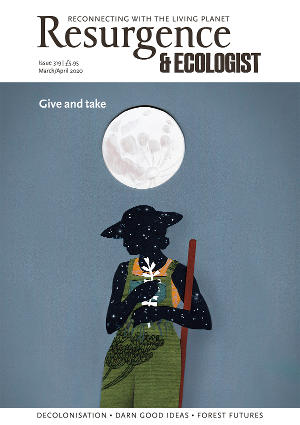Have you ever tried to make a wild-flower meadow? We did, but when we started more than 10 years ago, the grass in our paddock was far too rich for the flowers we wanted to encourage, and however diligently we scattered yellow rattle seeds, they were quickly swamped by vigorous grasses. Over the years we tried many other things, but it took the preparations for our daughter’s wedding, when we scraped off the topsoil to provide a flat platform for a marquee, for the meadow really to take off. Now we get a pretty good show of flowers in the early summer, but even today I think we could and should have done better.
Now, of course, I know why it was such a struggle, for I have read Yvette Verner’s lovely book We Made a Wildflower Meadow. She describes how, with apparently breathtaking ease, she and her hardworking husband Mike bought a patch of land in their village and turned it into the most beautiful meadow not only replete with wild flowers, but also rich in birds, badgers, hedgehogs, rabbits, bees and woodlice, as well as being visited by the odd frog and grass snake.
I’m envious as I read Verner’s words, because not only does everything work – she does admit to mistakes, but these are usually because they used less than ideal tools or did something minorly wrong; not real mistakes – but also their results seemed to come so easily. Within a blink of an eye, it seems, they had drifts of flowers and snuffling animal visitors, as well as lovely places to sit and admire the fruits of their labour. But I’m also – and more seriously – impressed, because it’s clear they work really hard on their meadow, and consistently too, with none of the coming and going and “Oops, we should have done that in the autumn” that characterises my method of outdoors activity.
Verner’s book is above all a serious guide to the art and craft of creating a wild-flower meadow, and because it’s serious, and well and clearly written, I heartily recommend it. There’s good advice on soil types, tree and hedge planting, fencing and furniture, on how to generate a succession of flowering plants through a long summer, and, perhaps most hearteningly, how to enjoy and share what has been created. Verner’s accounts of visiting schoolchildren who had never seen badgers before or played in the long grass of a beautiful meadow are a particular delight.
But so too is her warm and joyful style of writing: she describes the hard work, but also the laughter; and she makes it clear that spending time in the meadow to understand its special character, and letting Nature take its course (even if gently guided) are important parts of the success of the project. So when they come to haymaking, blackberry and sloe picking, and otherwise reaping the rewards of their hard work, we can all rejoice in the beauty of a well-scythed meadow and the satisfaction of success. The gentle approach to farming and sharing, and the joy in being close to Nature that characterise their philosophy are a lesson in the value of the simple pleasures of life. It’s one we would all do well to adopt in our too-busy lives.






